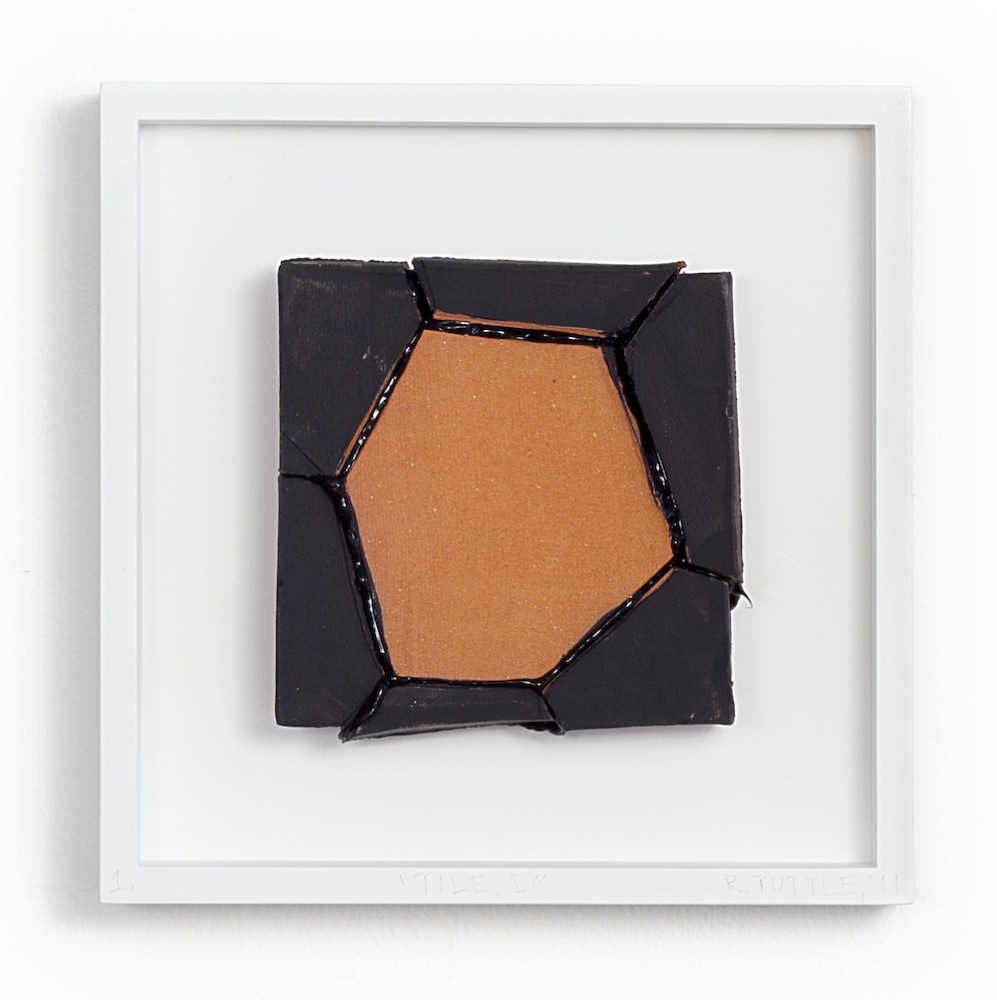Weaving has a certain cast of the future while pottery does of the past. – Richard Tuttle
After a successful etching collaboration in 2009, Gemini welcomed Richard Tuttle’s return to their Los Angeles studio. Fascinated by the dynamics of clay in Southern California, and responding to his long-held interest in ancient Greek pottery, Tuttle proposed the idea of a series of editioned ceramic tiles. Later he worked on another two works, glazed vessels with something of pop idiom. This pair will be the subject of a later CFile post.
Both Peter Voulkos and Ken Price, founder and student respectively of the ceramics department at Otis College (now known as the Otis College of Art and Design) were a clear influences for Tuttle. So too, surprisingly, was Sidney Felsen, co-founder of Gemini. What is not widely known is that Felsen spent eight years laboring over a potter’s wheel at night school at Otis Institute of Art and Design, as well as Chouinard Art Institute (now known as Cal Arts) as a classmate of another pioneer of Los Angeles clay, Elsa Rady (1943-2011).
Fortunately, Stephanie Wagner, an experienced ceramist, was a member of the Gemini team, and became the sole collaborator with Tuttle in the series of six tiles.
The project was begun and completed in five very active days. Tuttle made preparatory drawings, and Wagner provided Tuttle with ½” thick tiles, formed from Durango earthenware clay. The square tiles began at 4” and scaled up to as much as 9”. Tuttle viewed this as an extension of his printmaking endeavors. The unaltered tile was the first “run,” and the ensuing changes made by Tuttle were done on each tile in a very specific sequence, equivalent to the way the imagery on a print is built up and developed.
Although he originally conceived this work as an edition, by individually incising, shaping and painting each tile, the final series, six different configurations, is comprised of anywhere from 10 to 21 unique objects. After the tiles were fired and assembled, Tuttle selected a delicate, painted white frame in which he positioned each tile, treating the frame like the paper on which a printed image would be placed and signing the face of the frame with his initials, the title and a sequential number.
The resulting work retains a freshness reminiscent of his art made from plywood and corrugated cardboard enjoying the material’s undisguised banality. He is also quoting, without being literal, the red-on-black, black-on-red painting on Greek attic wares that have long been a source of fascination for him for some time. Even more intriguing is a possible homage to Lucio Fontana, an artist Tuttle long admired and whose ceramics he knew well.
Tuttle is recognized as one of the most significant artists working today. Since the mid-1960s, he has created an extraordinarily varied body of work that deftly eludes historical or stylistic categorization. His efforts occupy space between painting, sculpture, poetry, assemblage, and drawing. He works with humble materials, reflecting the fragility of the world in his poetic works.
“Without a specific reference point, his investigations of language line, volume, color, texture, shape, and form are imbued with a sense of spirituality and informed by a deep intellectual curiosity expressed,” his dealer Pace Gallery notes, to which one might add, in ways that are oblique, unexpected and often revelatory.
The artist lives and works in Mount Desert, Maine; Abiquiú, New Mexico and New York City.
Garth Clark the is Chief Editor of CFile.
Above image: Tile, I (four inches) © 2011 Richard Tuttle and Gemini G.E.L. LLC

Tile, II (five inches) © 2011 Richard Tuttle and Gemini G.E.L. LLC.

Tile, III (six inches) © 2011 Richard Tuttle and Gemini G.E.L. LLC.

Tile, IV (seven inches) © 2011 Richard Tuttle and Gemini G.E.L. LLC.

Tile, V (nine inches) © 2011 Richard Tuttle and Gemini G.E.L. LLC.

Tile, VI (nine inches) © 2011 Richard Tuttle and Gemini G.E.L. LLC.



Richard Tuttle at work on Tiles. Photographs by Sidney B. Felsen © 2011.

Add your valued opinion to this post.